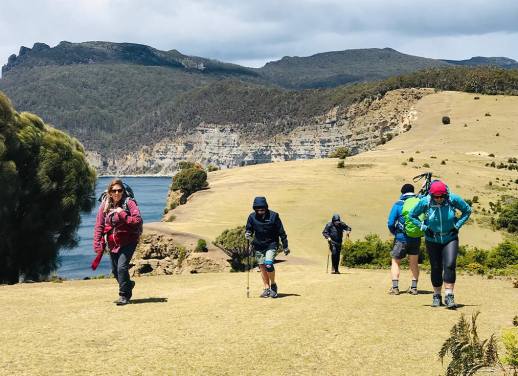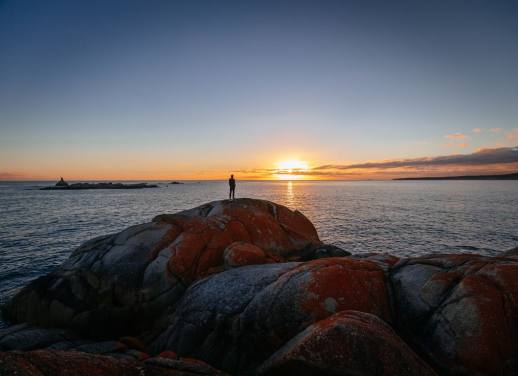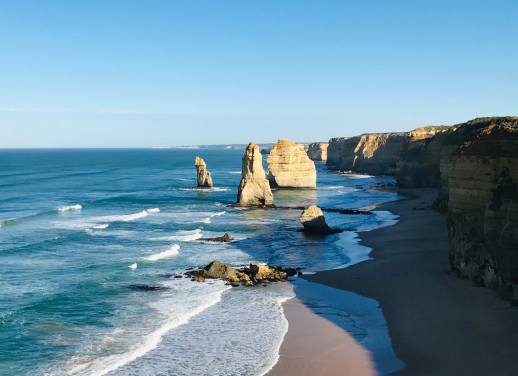On an exploratory trip in Australia’s Red Centre, guide Benji shares the power of Country with travellers – where every rock, river and sunrise carries a deeper meaning.
A ripple of giddiness erupts through our group as we pull into our campsite.
It’s a simple setup: nine canvas tents with stretchers and swags, a small kitchen shelter, basic bathroom and shower blocks and some paths demarcated by runways of rocks on the ground.
But it’s what surrounds us that is truly exciting: not much.
No traffic. No white noise from household machinery. No phones dinging. No reception at all, actually.
Just birdsong, red dirt, scrubby grass and, looking up, a vast uninterrupted blanket of brilliant blue sky. We seem to collectively exhale, slacken, settle. It’s our first taste of what it feels like to be on Country.
We’re here on a special edition Intrepid trip – a First Nations first cultural immersion into Australia’s Red Centre – having driven for over two hours on remote stretches of highway from Mparntwe (Alice Springs) and for 45 minutes down what felt like the world’s longest driveway. The campsite is in the heart of the Rodna Homelands, our home base for the next five nights, and we’re here with our guide Benji Kenny, a Western Arrernte man, devoted cultural conduit and Traditional Custodian of this land.
Rodna: remote, unique and rarely seen
Rodna covers around 380 square kilometres and boasts a unique land title – the highest level of Indigenous-operated land in Australia. ‘The Rodna area and the five land trusts around Ntaria (Hermannsburg) have a higher land title than just native title,’ Benji explains. ‘It’s protected land, meaning mining companies can’t just come in.’ This land has a rich history in the Land Rights Act movement, having been returned to the Western Arrernte People by German missionaries.
A sturdy gum tree in the middle of our campsite was planted in 1976 to commemorate this act, standing tall as a symbol of resilience and cultural continuity.
Benji shares a quote from anthropologist Ted Strehlow that resonates with how he experiences Country: ‘the overwhelming affection felt by an Aboriginal person for their ancestral territory… the mountains, creeks, springs, waterholes and gorges are to them not merely interesting or beautiful… they are the handiwork of the ancestors from whom they themselves have descended… the whole countryside is their living age-old family tree.’
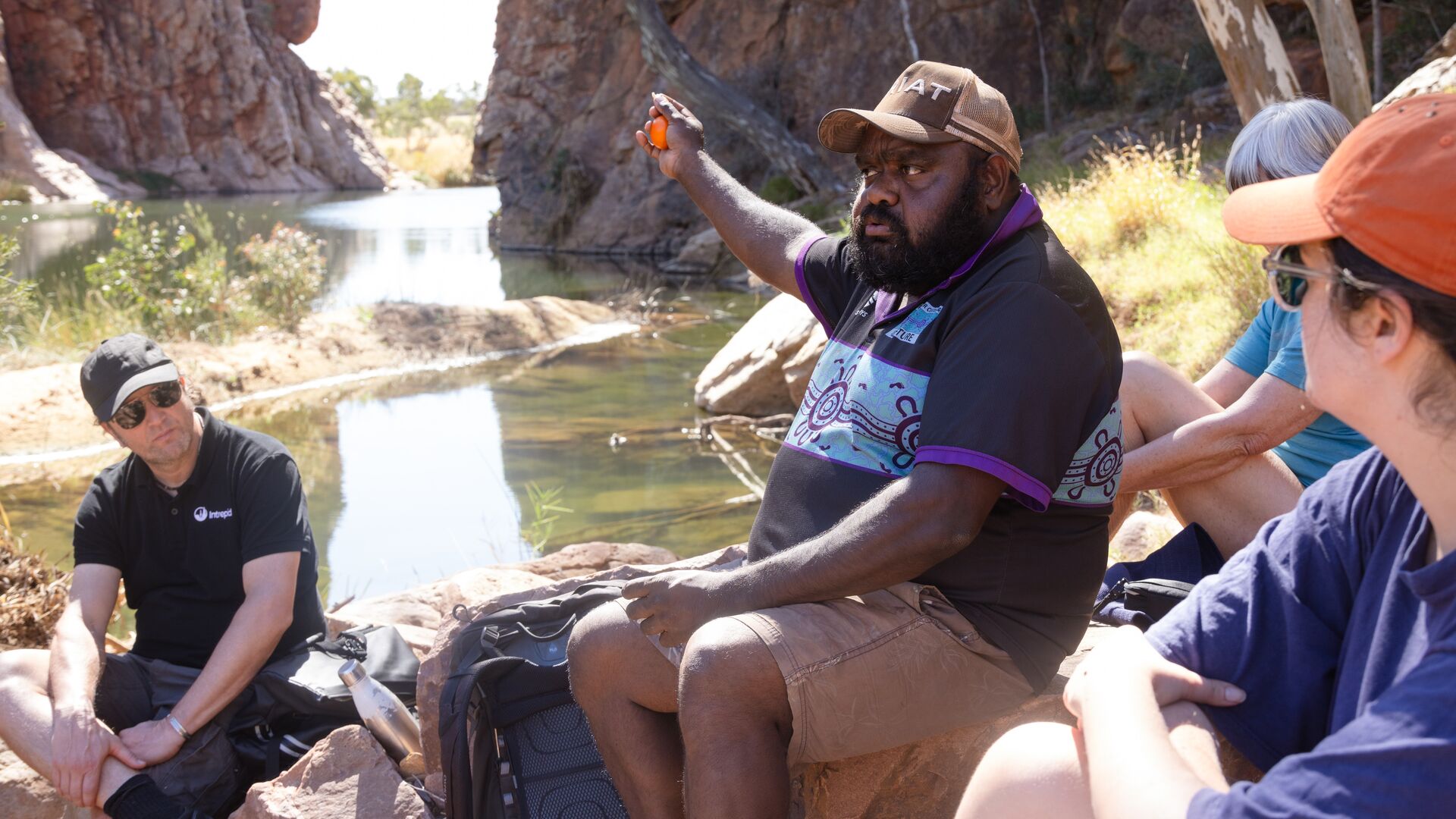
For Benji, the land is not just scenery to admire; it is alive, intelligent and observant. It doesn’t belong to him; he belongs to it. ‘When we are on Country, our bodies are regenerating and healing,’ he tells us. ‘We are taught from a young age that if you care for Country, Country will care for you.’
Over the next few days, Benji shares Creation stories of ancestor totems – caterpillars, goannas, dancing ladies and dogs – that shaped the landscapes and left echoes of evidence in the stars. He uses ‘sand talk’ – the First Nations practice of illustrating ideas by drawing with sticks on the ground – to explain concepts from his culture: how familial lines work, which people belong to which land and the connection of songlines and stories that pass through cultural groups across the entire continent, from Perth to the Blue Mountains.
A nearby watering hole is beautiful on our first visit, when members of our group venture there alone, but mind blowing on our second, when we return with Benji who shares its significance in the dog Dreaming story. The site is actually the namesake of ‘Rodna’ – meaning ‘dog’s jawbone’ – and is where dogs’ souls go to rest.
‘We are taught from a young age that if you care for Country, Country will care for you.’
We embark on a 12-kilometre return hike along the Finke River through Rodna Gorge, its rust-red shoulders soaring up to hem in the ancient artery. At 500 million years old, the Finke is believed to be the world’s oldest river system. Though it rarely flows, it has a string of permanent freshwater holes where we stop for cold plunges and snacks. Benji tells us the birds flying low overhead are his ancestors, welcoming us to Country.
We tread the stony banks until the gorge narrows, reaching the rarely seen back of Yapalpe (Glen Helen Gorge), regarded as the birthplace of humanity for the people of the Rodna Homelands. If the site is abuzz with tourists on the other side, we can neither see nor hear them as we eat our packed lunch in peace on the bank. The water is dark emerald, and still – that is, until we scramble over the slippery rocks to plunge into its icy depths, shocking the air from our lungs.
We stretch out like goannas to dry off on the rocks, closing our eyes to the sun. I feel free. Lucid. Leisurely unshackled from the constraints of self, as if the boundary between my body and the natural world is becoming more porous with each passing breath.
In the frigid desert nights, we trade stories around the campfire before we curl into our swags, waking early to take in the extraordinary dawns. Stars slowly disappear as the sky stains with deep purples and oranges, before a startling blue emerges from the horizon. Another cloudless day.
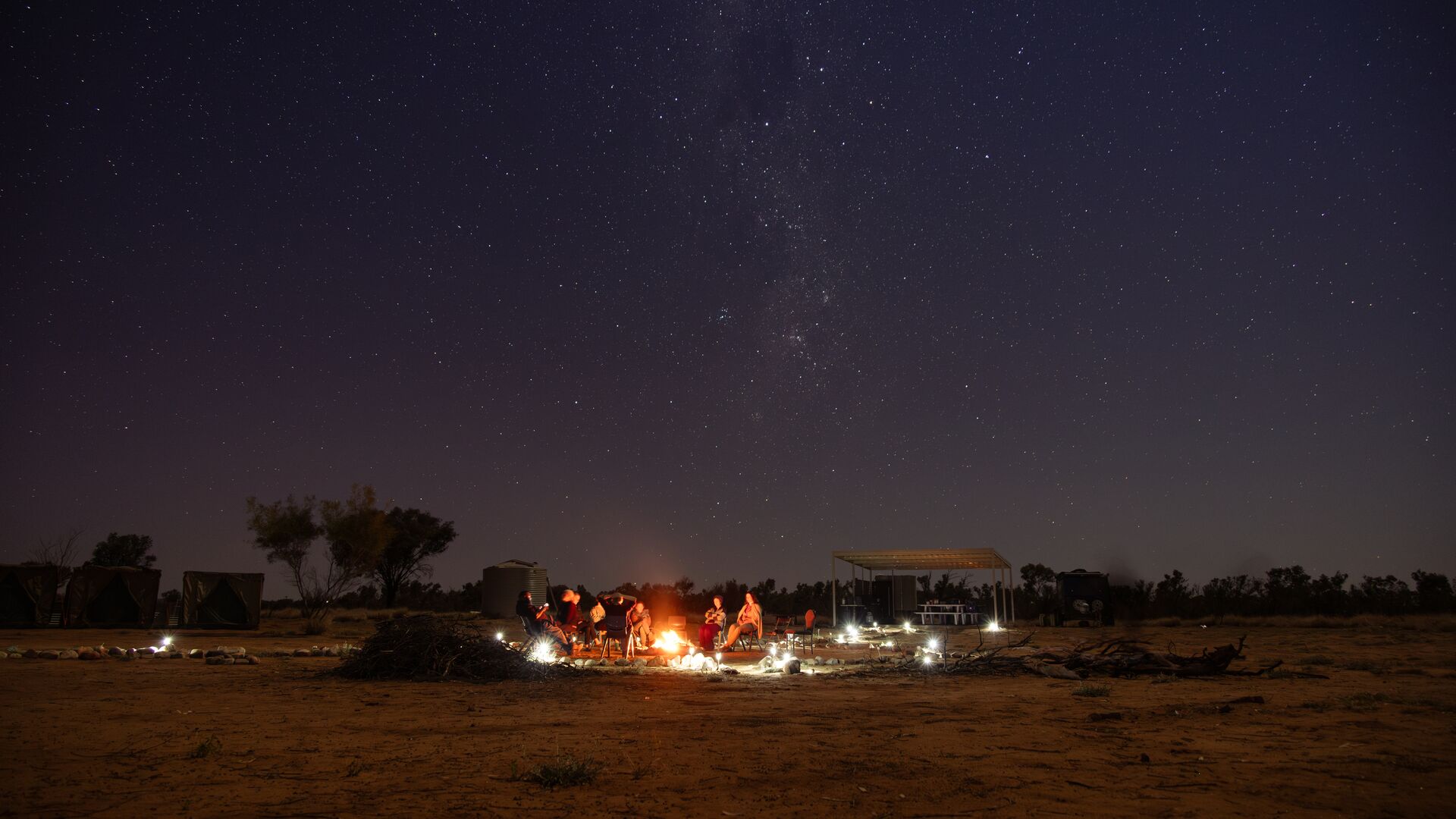
Beyond Rodna: Central Australia’s wealth of wonder
We venture outside of Rodna, squeezing in visits to a fraction of the noteworthy sites that neighbour our camp. At Palm Valley, countless red cabbage palms fringe the Finke. It’s the only place in Central Australia where this palm tree grows, and an easy walking trail weaves us through the oasis-like landscape.
In Ntaria (Hermannsberg), we explore a historic Lutheran missionary station, which has been preserved from German colonisation. Droughts and floods often overcame the town’s small population, who were awed by the resilience of the local First Peoples who survived and thrived in the harsh landscape. We briefly meet the talented artists in residence at Hermannsburg Potters and visit the humble home of Australian art icon Albert Namatjira, which he built himself in 1944.
The spine of Tjoritja (West MacDonnell Ranges) slices through the centre of the outback, and we spend a packed day visiting many of its sacred sites. We read the Creation story and geological interpretation of Tnorala/Gosse Bluff crater, both celestial in origin; take a leisurely dip at Kwartatuma (Ormiston Gorge), a beach in the heart of the desert; and embark on a late afternoon hike into the dramatic red rock amphitheatre of Yarretyeke (Redbank Gorge).
We technically don’t have time to see Roma Gorge, but Benji thinks it best we do, so we stretch time to visit, bouncing across sand and rocky creek bed in the van for an hour. When we arrive, we have the site to ourselves. It’s silent. Roma Gorge is known for its intricate rock carvings, estimated to have been made between 6000 and 8000 years ago. Before Stonehenge. Before the invention of writing.
In the gorge, as the sun meets the horizon and orange light floods the stone crevices, we are quiet with reverence. We can feel it: the history, the spirit, the sacredness of this place where we stand as observers at this pinpoint in time. The power of everything that was, that is, that is becoming. The enormity should feel overwhelming, but it doesn’t.
We are exhausted on the three-hour drive back to camp, and full.
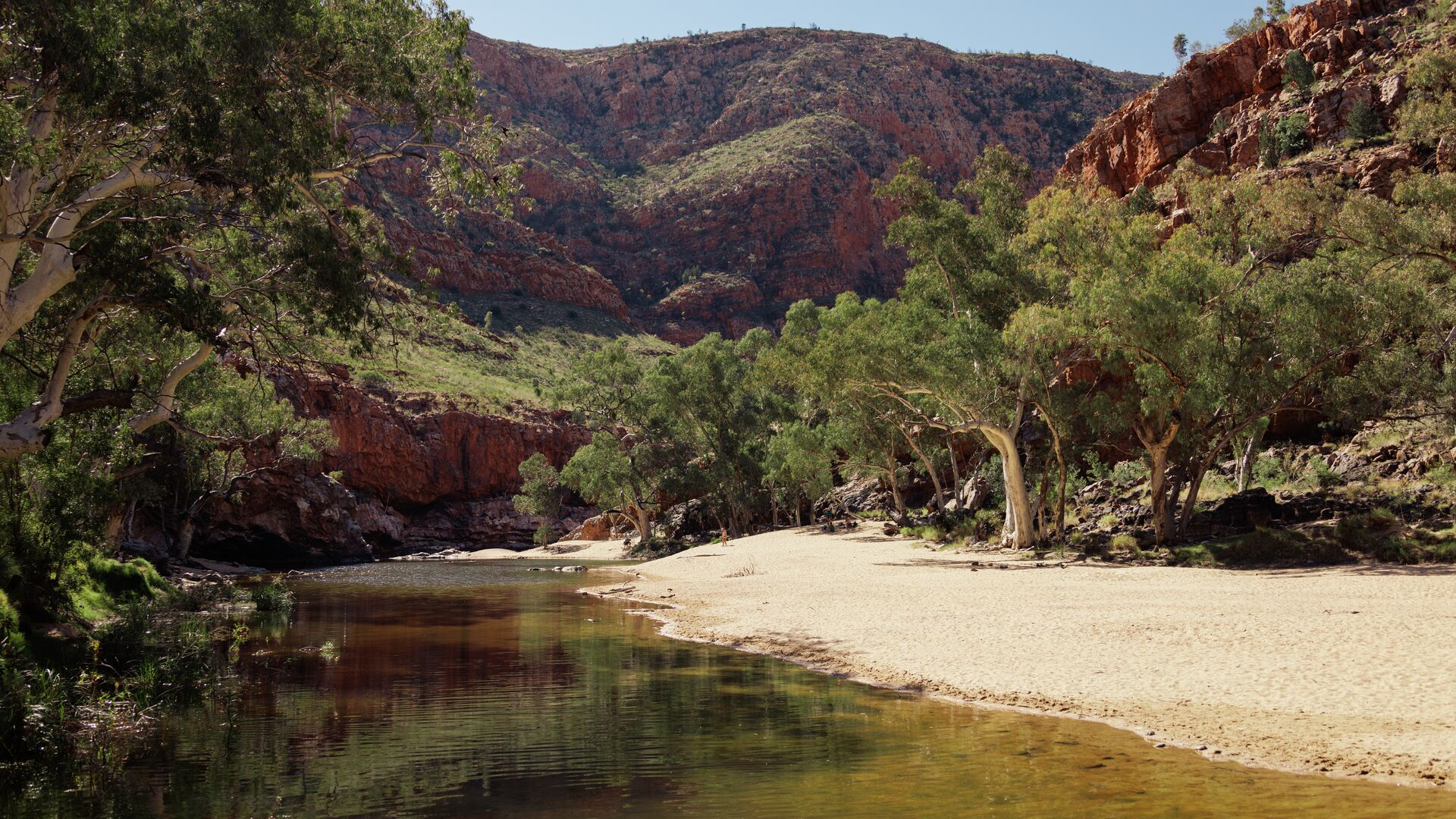
Maybe we have the Outback all wrong
As we drive out of Rodna on day five, the return of reception feels like an intrusion. Phones ding. Emails arrive. The habits of humanity come rushing in.
I think back to our arrival. How I considered the absence of these things to mean emptiness, ‘not much’. I was confusing peace with scarcity. Trying to square up the stock image of the Outback I had in my mind, and believing that what I could see was all that was there.
In reality, the Red Centre is not sparse, and it’s certainly not empty. It’s a place of abundance; a place of design. An intelligent self-organising system that mirrors the textured complexity of life itself. Spirits, landmarks and stories shape the entire landscape: from the red rocks to the mountain ranges, scrub, desert flowers. The earth, the water, the sky.
‘All places are sacred,’ Benji says. ‘The land is alive.’ It’s a beautiful thing to consider, and an honour: that as living, interconnected beings, this place won’t just be part of our story. We’ll be part of its story, too.
Intrepid designed this pilot trip in partnership with 100% Finke River Culture & Adventure, a First Nations-owned and operated tour company based in Australia’s Red Centre. As part of this partnership, travellers can visit Central Australia with Aboriginal guides on Intrepid’s new Trek the Larapinta Trail trip.

